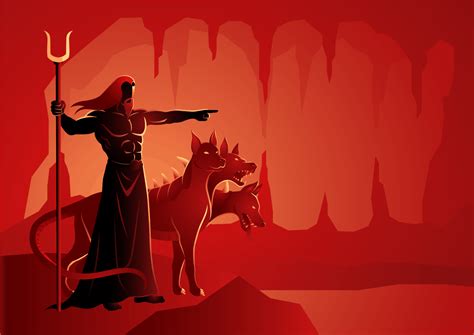Wikipedia Hades God

Hades, in Greek mythology, was the god of the underworld, ruling over the dead and all the riches that lay beneath the earth. As the son of the Titans Cronus and Rhea, Hades was one of the six children consumed by his father in an attempt to prevent a prophecy from being fulfilled, which stated that one of his children would overthrow him. However, Rhea managed to save their youngest child, Zeus, by giving Cronus a rock wrapped in cloth instead, and Zeus later forced Cronus to cough up his siblings, including Hades.
The Role of Hades in Greek Mythology

Hades played a pivotal role in the Greek pantheon, not only as the ruler of the underworld but also as the god of wealth, due to the precious metals and gems that lay hidden beneath the earth. His domain, the underworld, was divided into several sections, including the Asphodel Meadows, where ordinary souls resided, Tartarus, a place of torment for those who had defied the gods, and the Elysian Fields, a paradise for heroes and virtuous individuals. Hades was often depicted with a helmet of darkness, which made him invisible, and he was also associated with the three-headed dog Cerberus, who guarded the entrance to the underworld, and the river Styx, across which souls were ferried by Charon to enter the underworld.
Hades and Persephone
One of the most famous myths involving Hades is the story of his abduction of Persephone, the daughter of Demeter, the goddess of agriculture. Hades fell in love with Persephone and decided to abduct her, taking her back to the underworld to be his queen. Demeter was grief-stricken and refused to let the earth produce any crops until her daughter was returned. Zeus intervened, sending Hermes to bring Persephone back to the world above. However, before leaving the underworld, Hades tricked Persephone into eating a few pomegranate seeds, which bound her to the underworld and forced her to spend part of each year with Hades, during which time her mother’s grief caused the earth to become barren and cold, resulting in winter.
| Aspect of Hades | Description |
|---|---|
| Domain | Underworld, wealth, and the dead |
| Symbols | Helmet of darkness, Cerberus, and the key to the underworld |
| Abode | The palace in the underworld |

Worship and Legacy of Hades

Despite being one of the principal gods of the Greek pantheon, Hades was not widely worshiped, as the Greeks feared him and his domain. However, he was revered in certain cities, particularly in Elis, where sacrifices were made to him. The worship of Hades often involved rites and sacrifices aimed at appeasing him and preventing his wrath. In addition to his role in mythology, Hades has had a lasting impact on Western culture, symbolizing the underworld and the afterlife in many literary and artistic works.
Representation in Art and Literature
Hades has been depicted in various forms of art and literature throughout history, often symbolizing the mysterious and sometimes feared aspects of death and the afterlife. In literature, he appears in works such as Homer’s “Iliad” and “Odyssey,” as well as in Virgil’s “Aeneid.” In art, Hades is commonly shown with his symbols, such as the helmet of darkness and Cerberus, emphasizing his role as the ruler of the underworld.
Key Points
- Hades was the Greek god of the underworld and wealth, known for his helmet of darkness and his association with Cerberus and the river Styx.
- The myth of Hades and Persephone explains the changing of the seasons and showcases Hades' complex character.
- Hades was not widely worshiped but was revered in certain cities, with sacrifices made to appease him.
- He has had a lasting impact on Western culture, symbolizing the underworld and the afterlife in many literary and artistic works.
- Hades' legacy extends beyond Greek mythology, influencing the way the afterlife is perceived and depicted in various forms of media.
Meta Description: Explore the role of Hades in Greek mythology, from his domain as the god of the underworld to his impact on Western culture and literature, understanding his complex character and lasting legacy.
What was Hades’ role in Greek mythology?
+Hades was the god of the underworld, ruling over the dead and the riches beneath the earth. He played a pivotal role in the Greek pantheon, influencing the lives of both gods and mortals.
What is the myth of Hades and Persephone?
+The myth of Hades and Persephone tells the story of Hades’ abduction of Persephone, leading to her mother Demeter’s grief and the changing of the seasons. It explains why Persephone spends part of each year in the underworld with Hades, causing winter.
How has Hades influenced Western culture?
+Hades has had a significant impact on Western culture, symbolizing the underworld and the afterlife in literature, art, and other forms of media. His legacy extends beyond Greek mythology, influencing perceptions of death and the afterlife.



